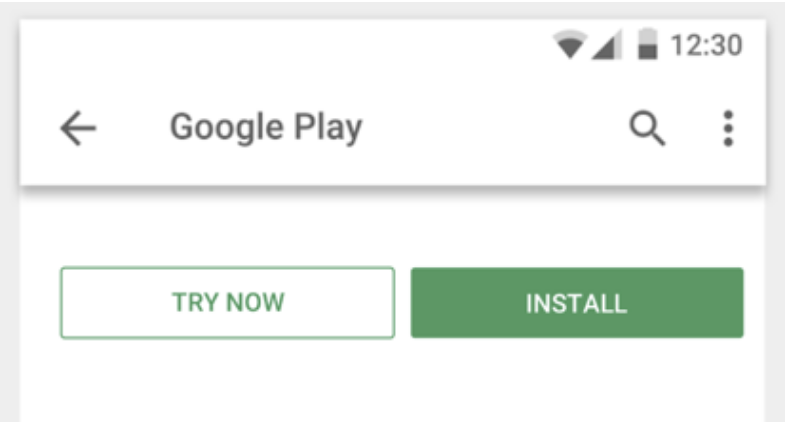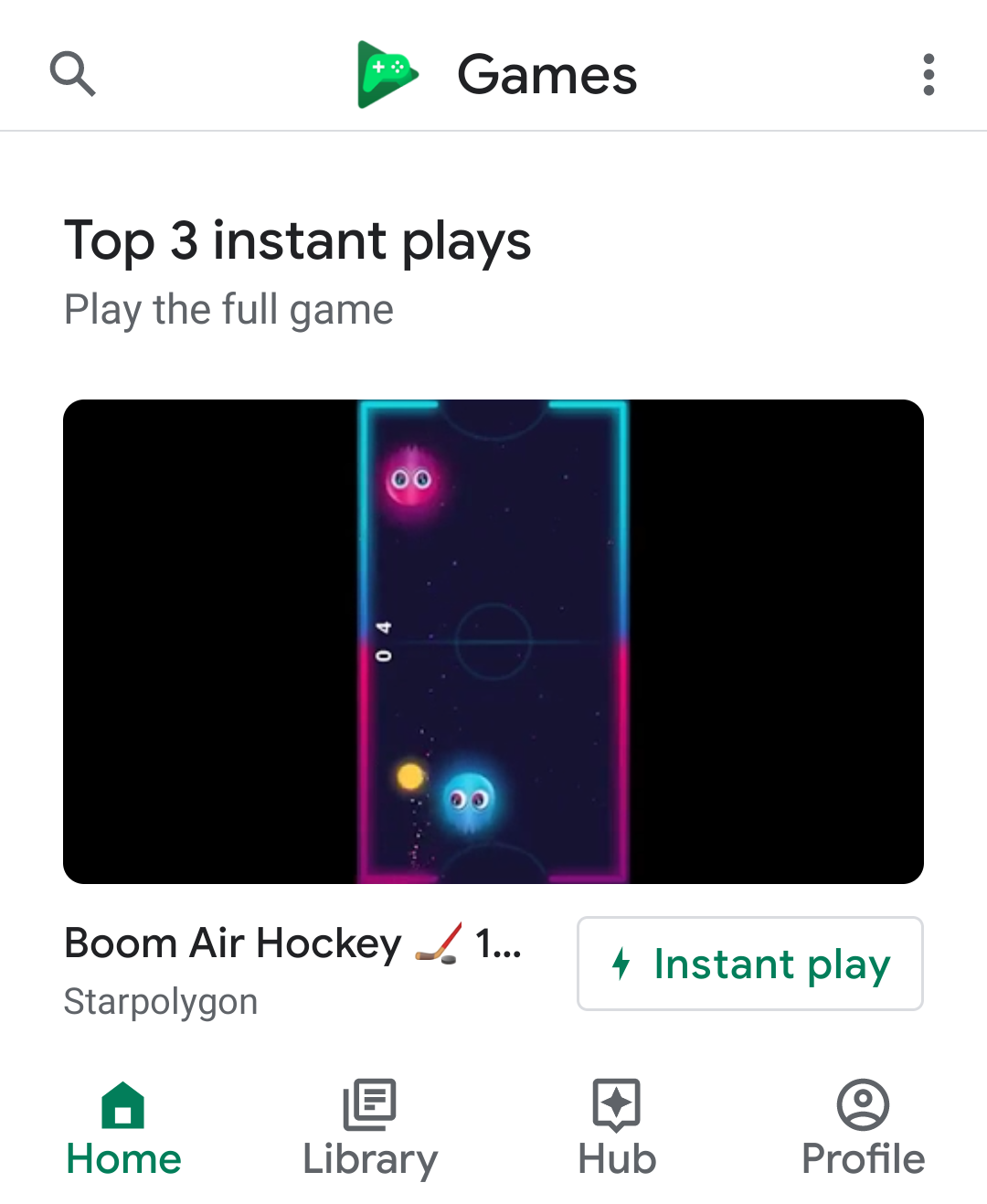Warning: Google Play Instant will no longer be available. Starting December 2025, Instant Apps cannot be published through Google Play, and all Google Play services Instant APIs will no longer work. Users will no longer be served Instant Apps by Play using any mechanism.
We're making this change based on developer feedback and our continuous investments to improve the ecosystem since the introduction of Google Play Instant.
To continue optimizing for user growth, we encourage developers to refer users to their regular app or game, using deeplinks to redirect them to specific journeys or features when relevant.
Google Play Instant enables native apps and games to launch on devices running Android 5.0 (API level 21) or higher without being installed. You can build these types of experiences, called instant apps and instant games, using Android Studio. By allowing users to run an instant app or instant game, known as providing an instant experience, you improve your app or game's discovery, which helps drive more active users or installations.
This guide presents an overview of the Google Play Instant experience.
How the instant experience works
With Google Play Instant, users can tap on a button in the Play Store, Google Play Games app, or a website banner to use an app or game without installing it first. Figures 1 and 2 show examples of these discovery surfaces.
When Google Play receives one of these requests for an instant app or game, it sends the necessary files to the Android device that sent the request. The device then runs the app or game.
Instant experiences fall into two categories: "Try" experiences in the Play Store and "Instant play" games in the Google Play Games app.


Instant "Try" experience in the Play Store
Instant experiences are shown using a Try now button in the Play Store (as shown in Figure 1). This type of experience is typically a smaller trial version of your app or game created with the goal of driving installs. For example, game developers may want to build the first level of their game as an instant experience and then prompt users to install the full game.
Google Play Instant also allows you to display a prompt within your instant experience, inviting users to install the full experience on their device.
"Instant play" full game experience in the Play Games app
Full games that are packaged using Google Play Instant are eligible to be featured prominently on the homepage of the Google Play Games app. These "Instant play" games are full experience games, not trial versions. Players tap on the Instant play button (as shown in Figure 2) to play the full game without installing it first. To learn more, see Instant play games.
Enable instant experiences by reducing app or game size
Your app or game must be under 15 MB to enable these instant experiences, but the smaller you make it, the better it will be for users.
Reducing the size of your instant app or game has a number of benefits including:
- Higher user engagement or installations and business success
- Enabling all instant surfaces including the Try now button in the Play Store
- "Instant play" homepage featuring in the Google Play Games app
To learn how you can reduce the size of your app or game, see Reduce the size of your instant app or game.
Considerations
Some apps contain more advanced architectural elements, which the following sections describe. If your app or game contains any of the following elements, read the section for that element.
Deep links
If your existing app already uses deep links or Android App Links, see the guide on how to create app links for your instant experience.
Multiple entry points
It's possible to provide different instant experiences from the same app or game by creating multiple entry points. For example, a puzzle game might have two different modes: a single-player, timed challenge and a multi-player matchup. You could deploy these modes as separate instant experiences, allowing players to try out different aspects of gameplay.
To create these different entry points, configure a different entry point for each experience that you'd like to provide. To learn more, see Provide multiple entry points into an instant experience.
Learn more
To learn more about Google Play Instant, see the following resources:
Additional resources
For more information about Google Play Instant, consult the following resources.
Training
- Google I/O 2018: The future of apps on Android and Google Play: modular, instant, and dynamic
- Google I/O 2018: How game developers are providing success
